Neuroanatomical evidence for reciprocal regulation of the corticotrophin-releasing factor and oxytocin systems in the hypothalamus and the bed nucleus of the stria terminalis of the rat: Implications for balancing stress and affect
- PMID: 21481539
- PMCID: PMC3142325
- DOI: 10.1016/j.psyneuen.2011.03.003
Neuroanatomical evidence for reciprocal regulation of the corticotrophin-releasing factor and oxytocin systems in the hypothalamus and the bed nucleus of the stria terminalis of the rat: Implications for balancing stress and affect
Abstract
Activation of corticotrophin releasing factor (CRF) neurons in the paraventricular nucleus of the hypothalamus (PVN) is necessary for establishing the classic endocrine response to stress, while activation of forebrain CRF neurons mediates affective components of the stress response. Previous studies have reported that mRNA for CRF2 receptor (CRFR2) is expressed in the bed nucleus of the stria terminalis (BNST) as well as hypothalamic nuclei, but little is known about the localization and cellular distribution of CRFR2 in these regions. Using immunofluorescence with confocal microscopy, as well as electron microscopy, we demonstrate that in the BNST CRFR2-immunoreactive fibers represent moderate to strong labeling on axons terminals. Dual-immunofluorescence demonstrated that CRFR2-fibers co-localize oxytocin (OT), but not arginine-vasopressin (AVP), and make perisomatic contacts with CRF neurons. Dual-immunofluorescence and single cell RT-PCR demonstrate that in the hypothalamus, CRFR2 immunoreactivity and mRNA are found in OT, but not in CRF or AVP-neurons. Furthermore, CRF neurons of the PVN and BNST express mRNA for the oxytocin receptor, while the majority of OT/CRFR2 neurons in the hypothalamus do not. Finally, using adenoviral-based anterograde tracing of PVN neurons, we show that OT/CRFR2-immunoreactive fibers observed in the BNST originate in the PVN. Our results strongly suggest that CRFR2 located on oxytocinergic neurons and axon terminals might regulate the release of this neuropeptide and hence might be a crucial part of potential feedback loop between the hypothalamic oxytocin system and the forebrain CRF system that could significantly impact affective and social behaviors, in particular during times of stress.
Copyright © 2011 Elsevier Ltd. All rights reserved.
Figures



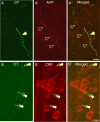
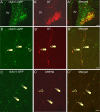
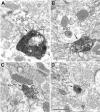
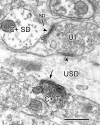

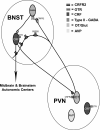
Similar articles
-
Corticotropin-Releasing Factor Receptors Modulate Oxytocin Release in the Dorsolateral Bed Nucleus of the Stria Terminalis (BNST) in Male Rats.Front Neurosci. 2018 Mar 21;12:183. doi: 10.3389/fnins.2018.00183. eCollection 2018. Front Neurosci. 2018. PMID: 29618970 Free PMC article.
-
Expression and neuropeptidergic characterization of estrogen receptors (ERalpha and ERbeta) throughout the rat brain: anatomical evidence of distinct roles of each subtype.J Neurobiol. 1998 Sep 5;36(3):357-78. doi: 10.1002/(sici)1097-4695(19980905)36:3<357::aid-neu5>3.0.co;2-v. J Neurobiol. 1998. PMID: 9733072
-
Corticotropin-releasing factor in the mouse central nucleus of the amygdala: ultrastructural distribution in NMDA-NR1 receptor subunit expressing neurons as well as projection neurons to the bed nucleus of the stria terminalis.Exp Neurol. 2013 Jan;239:120-32. doi: 10.1016/j.expneurol.2012.10.009. Epub 2012 Oct 12. Exp Neurol. 2013. PMID: 23063907 Free PMC article.
-
Oxytocin facilitates adaptive fear and attenuates anxiety responses in animal models and human studies-potential interaction with the corticotropin-releasing factor (CRF) system in the bed nucleus of the stria terminalis (BNST).Cell Tissue Res. 2019 Jan;375(1):143-172. doi: 10.1007/s00441-018-2889-8. Epub 2018 Jul 28. Cell Tissue Res. 2019. PMID: 30054732 Free PMC article. Review.
-
Hypothalamic and limbic expression of CRF and vasopressin during lactation: implications for the control of ACTH secretion and stress hyporesponsiveness.Prog Brain Res. 2001;133:99-110. doi: 10.1016/s0079-6123(01)33008-x. Prog Brain Res. 2001. PMID: 11589148 Review.
Cited by
-
Psychobiological mechanisms underlying the social buffering of the hypothalamic-pituitary-adrenocortical axis: a review of animal models and human studies across development.Psychol Bull. 2014 Jan;140(1):256-82. doi: 10.1037/a0032671. Epub 2013 Apr 22. Psychol Bull. 2014. PMID: 23607429 Free PMC article. Review.
-
Oxytocin Promotes Accurate Fear Discrimination and Adaptive Defensive Behaviors.Front Neurosci. 2020 Sep 23;14:583878. doi: 10.3389/fnins.2020.583878. eCollection 2020. Front Neurosci. 2020. PMID: 33071751 Free PMC article. Review.
-
Brain corticotropin-releasing factor signaling: Involvement in acute stress-induced visceral analgesia in male rats.Neurogastroenterol Motil. 2019 Feb;31(2):e13489. doi: 10.1111/nmo.13489. Epub 2018 Oct 9. Neurogastroenterol Motil. 2019. PMID: 30298965 Free PMC article.
-
Hypothalamic oxytocin mediates social buffering of the stress response.Biol Psychiatry. 2014 Aug 15;76(4):281-8. doi: 10.1016/j.biopsych.2013.09.017. Epub 2013 Sep 28. Biol Psychiatry. 2014. PMID: 24183103 Free PMC article.
-
Cocaine use disorder patients develop distinct patterns of regulation of acth secretion by a vasopressin agonist and oxytocin: Report on a laboratory study.Drug Alcohol Depend Rep. 2023 Apr 11;7:100158. doi: 10.1016/j.dadr.2023.100158. eCollection 2023 Jun. Drug Alcohol Depend Rep. 2023. PMID: 37397438 Free PMC article.
References
-
- Alheid GF. Extended amygdala and basal forebrain. Ann N Y Acad Sci. 2003;985:185–205. - PubMed
-
- Amico JA, Mantella RC, Vollmer RR, Li X. Anxiety and stress responses in female oxytocin deficient mice. J Neuroendocrinol. 2004;16:319–324. - PubMed
-
- Arima H, Aguilera G. Vasopressin and oxytocin neurones of hypothalamic supraoptic and paraventricular nuclei co-express mRNA for Type-1 and Type-2 corticotropin-releasing hormone receptors. J Neuroendocrinol. 2000;12:833–842. - PubMed
-
- Arluison M, Vankova M, Cesselin F, Leviel V. Origin of some enkephalin-containing afferents to the ventro-medial region of the globus pallidus in the rat. Brain Res Bull. 1990;25:25–34. - PubMed
Publication types
MeSH terms
Substances
Grants and funding
LinkOut - more resources
Full Text Sources
Other Literature Sources
Medical
Molecular Biology Databases
Miscellaneous

